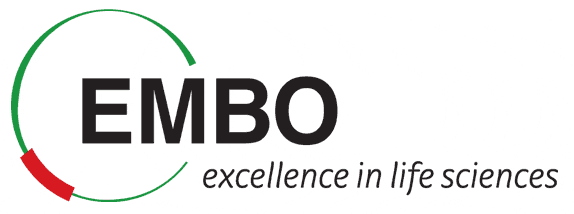KN09 - The EMBO Keynote Lecture: Fertilization at the Atomic Level - Marrying Basic Science and Reproductive Medicine

KN09 - The EMBO Keynote Lecture: Fertilization at the Atomic Level - Marrying Basic Science and Reproductive Medicine
Luca Jovine (Karolinska Institutet, Sweden)
Mammalian fertilization begins with the attachment of sperm to the zona pellucida (ZP), a specialized extracellular matrix that completely surrounds the egg and is essential for reproductive success in vivo. Despite the crucial role of the recognition between gametes and the fact that infertility affects more than 50 million couples worldwide, no mutations were until recently identified in the human genes that encode known egg-sperm interaction molecules. This paradoxical situation, which reflected the difficulty of genetically mapping mutations that are clinically silent in heterozygosis but cause sterility when homozygous, has now started to change as a result of the increasing availability of individual exome sequencing. Surprisingly however, the majority of infertility-associated mutations found in egg coat protein genes do not affect major ZP subunits ZP2 or ZP3, which are thought to interact with sperm, but rather ZP1, a minor glycoprotein component that covalently cross-links egg coat filaments into a three-dimensional matrix [1].
In my talk, I will describe a study [2] that started from the characterization of a ZP1 protein carrying a truncating mutation from infertile patients [3]. The analysis of this mutant unexpectedly suggested that, unlike in the mouse [4], filament cross-linking by ZP1 is crucial to form a stable ZP in human. Based on this finding, we mapped the function of ZP1 to its N-terminal ZP-N domain (ZP-N1) – an element also found in ZP2 (where it binds sperm) [5,6] as well as ZP4, a structurally-related egg coat component that is absent in the mouse [7]. We then determined crystal structures of ZP-N1 homodimers from a chicken homolog of the protein in different glycosylation states. These revealed that ZP filament cross-linking is highly plastic and can be modulated by ZP1 fucosylation and, potentially, zinc sparks. Moreover, we found that ZP4 ZP-N1 forms non-covalent homodimers in chicken but not human – explaining why ZP4 cannot functionally substitute for ZP1 in infertile patients. Together, these data identify human ZP1 cross-links as a promising target for non-hormonal contraception; at the same time, our work highlights the potential of structural biology as a tool to address key questions in reproductive medicine.
1. Greve, J.M. and Wassarman, P.M. Mouse egg extracellular coat is a matrix of interconnected filaments possessing a structural repeat. J. Mol. Biol. 181, 253–264 (1985).
2. Nishimura K., Dioguardi E., Nishio S., Villa A., Han L., Matsuda T. and Jovine L. Molecular basis of egg coat cross-linking sheds light on ZP1-associated female infertility. Nat. Commun. in press (2019).
3. Huang, H.-L., Lv C., Zhao Y.C., Li W., He X.M., Li P., Sha A.G., Tian X., Papasian C.J., Deng H.W., Lu G.X. and Xiao H.M. Mutant ZP1 in familial infertility. N. Engl. J. Med. 370, 1220–1226 (2014).
4. Rankin T., Talbot P., Lee E. and Dean J. Abnormal zonae pellucidae in mice lacking ZP1 result in early embryonic loss. Development 126, 3847–3855 (1999).
5. Raj I., Sadat Al Hosseini H., Dioguardi E., Nishimura K., Han L., Villa A., de Sanctis D. and Jovine L. Structural basis of egg coat-sperm recognition at fertilization. Cell 169, 1315–1326.e17 (2017).
6. Avella M.A., Baibakov B. and Dean, J. A single domain of the ZP2 zona pellucida protein mediates gamete recognition in mice and humans. J. Cell Biol. 205, 801–809 (2014).
7. Conner S.J., Lefièvre L., Hughes D.C. and Barratt C.L.R. Cracking the egg: increased complexity in the zona pellucida. Hum. Reprod. 20, 1148–1152 (2005).
